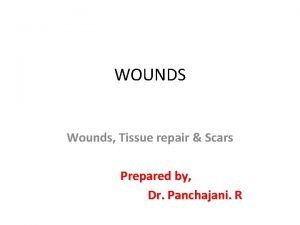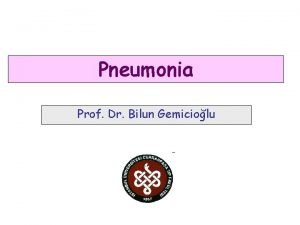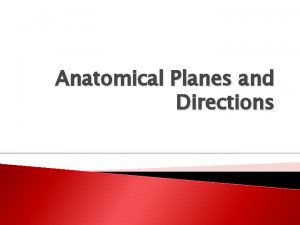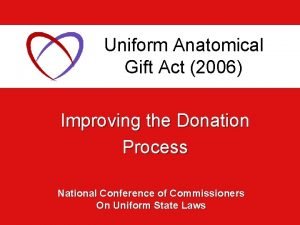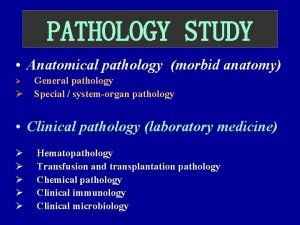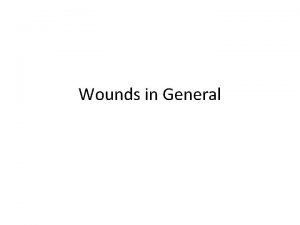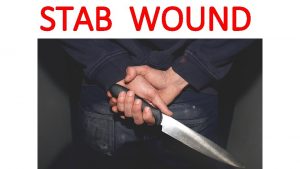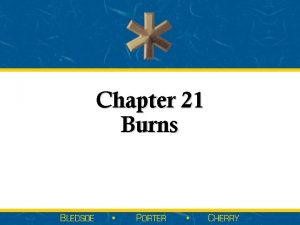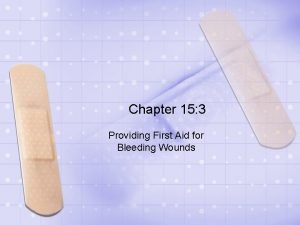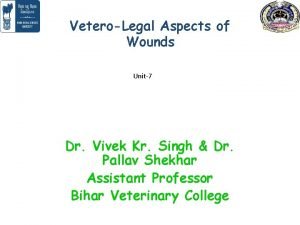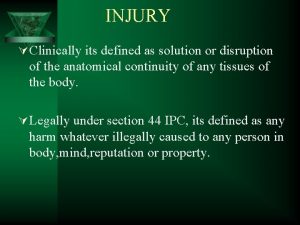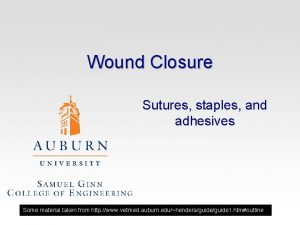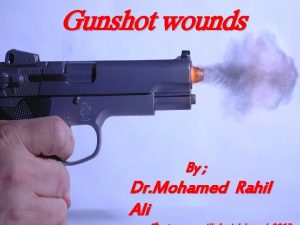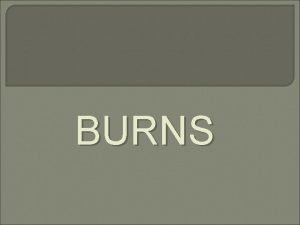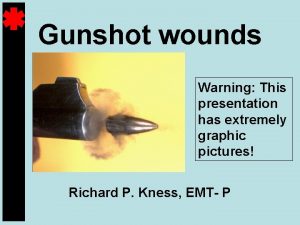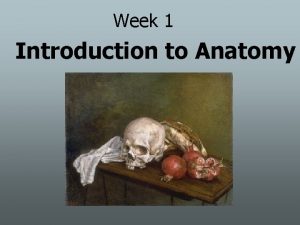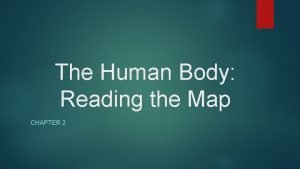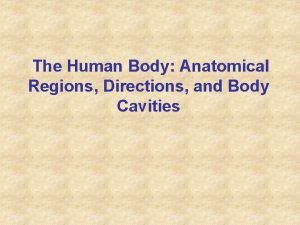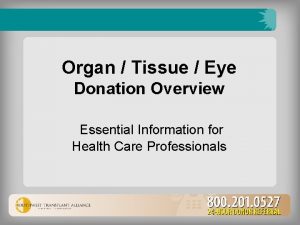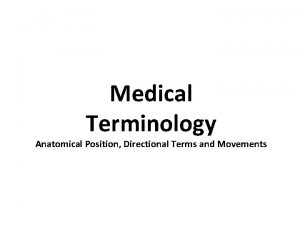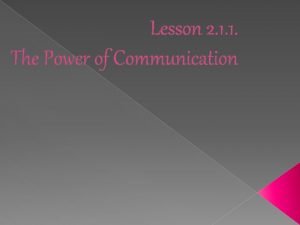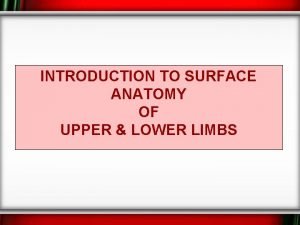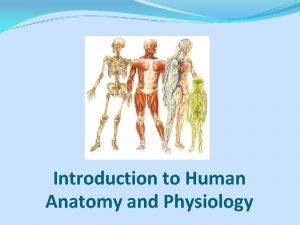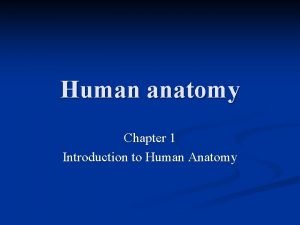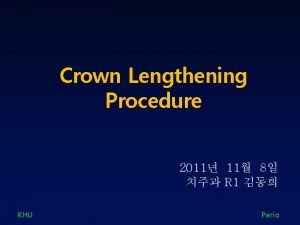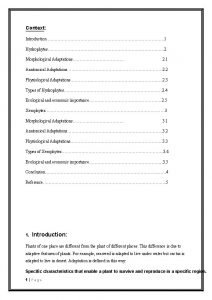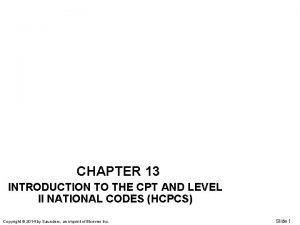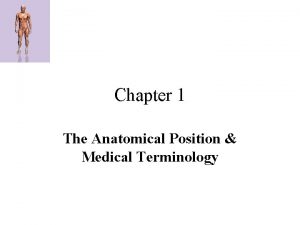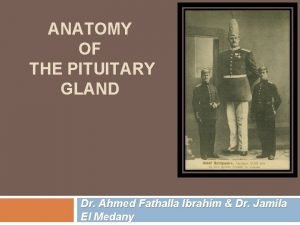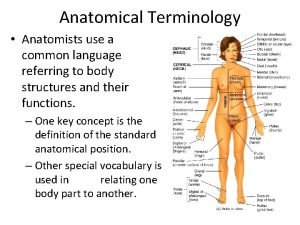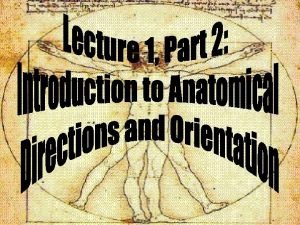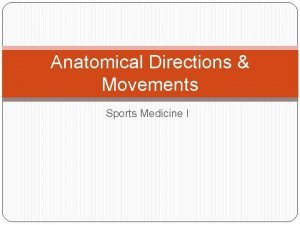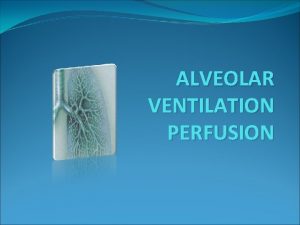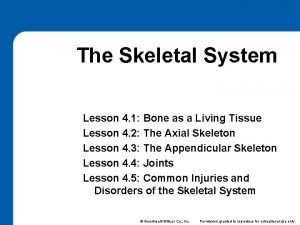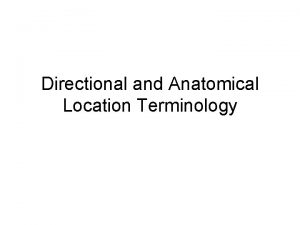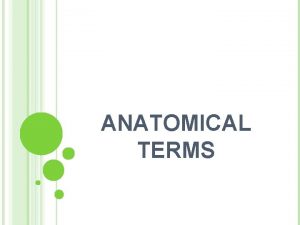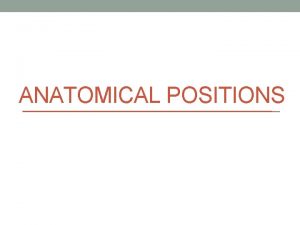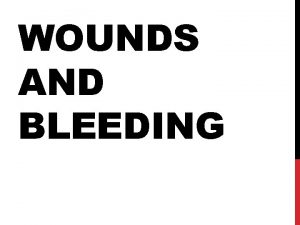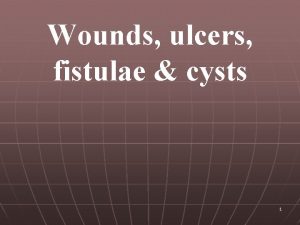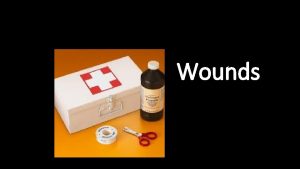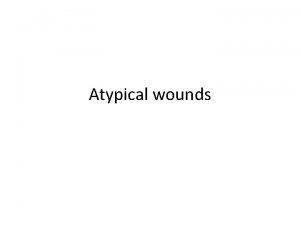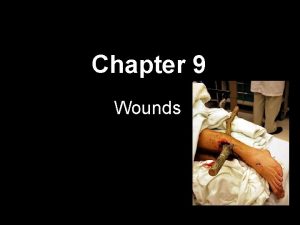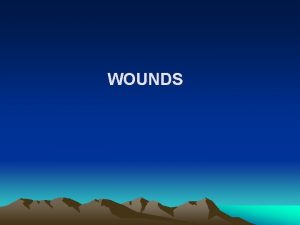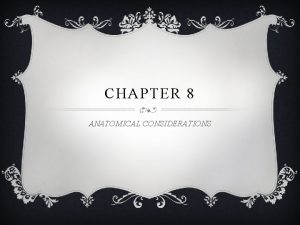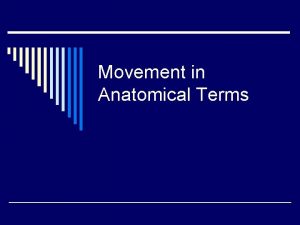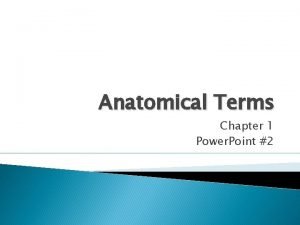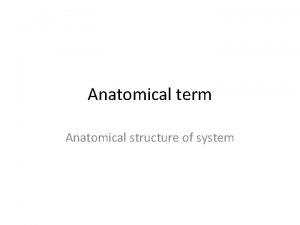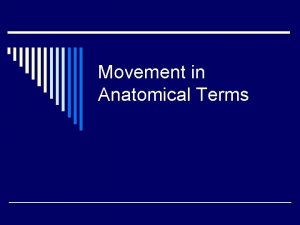Wounds l Definition l Classification of wounds Anatomical



















































- Slides: 51



Wounds l Definition: l Classification of wounds: Anatomical Legal classification: Medico- legal classification: 1. 2. 3.

Anatomical classification l Skin l bone Fatal wound: l Muscle l Mucous membrane l Hollow organ

Legal classification: l Simple wound l Dangerous wound: l Fatal wound:

3 -Medico- legal classification: l Sharp l Blunt l Firearm. l Physical injuries.

A-Wounds caused by sharp instruments Incised (Cut) wounds. Stab penetrating wounds. NB Transfixing wounds. Defense wounds n n n

I-Incised (cut) wound: Definition : n Characters: n 1 - The edges 2 - The length 3 - Gaping of the edges 4 - Bleeding 5 - Liability to sepsis 6 - Healing

Its age can be determined to know the time of its infliction by histological examination 30 minutes – 4 hours: n Margination of polymorph nuclear leucocytes 48 hours: n Pus may be present if sepsis occurs. 10 -15 days: n Complete healing by primary intention if no sepsis.

Its age can be determined to know the time of its infliction by histological examination 3 weeks: Red scar. 3 months: Scar becomes coppery. 6 months: Scar is thin and pale, n n n



II- Stab wound Definition: n Unibladed knife or Bibladed knife Characters: More deep than long The edges The shape of the wound may be changed if They are very dangerous A broken tip of the weapon may be found in the wound. n n n n


Different Blades

Types of stab wounds: Ordinary stab wounds. Punctured wounds. Penetrating wounds (3 PMS). Transfixing wounds. n n


Hemopericardium



Fabricated wound: Definition n Characters: n Aims n

Defense wounds Definition: 1 - Injuries sustained by grasping the weapon: 2 - Injuries sustained during raising the hand


Defense wounds

2 - Wounds caused by blunt instruments: Abrasions. n Bruises (contusion). n Lacerations. n

1 -Abrasion Definition Causative instrument Types linear Sliding Pressure Impact Bite n n n. 1. 2. 3. 4. 5

12/11/2021 27


ML importance of abrasions Violence Its shape Its site Its age Cut and contused wounds . 1. 2. 3. 4. 5

2 - Contusions Definition n Types : ecchymosis –bruise-contusion - n

Factor affecting size of contusion Age Sex Color of the skin. Gravity. Blood Diseases Force Onset of death: ML importance n n n n

Age of contusion 1 st day : red in color (oxy HB) After 1 -3 days : blue ( reduced Hb). After 3 -5 days : green ( biliverdin) After 5 -8 days : yellow (bilirubin) Bruises fade away ( heal) in 2 -3 weeks. n n n



Color changes

Bruises may be dangerous if : They occur in a trigger zone. They are extensive. They become infected They hide a more serious injury : e. g. rupture organ. n n

3 -Contused wounds Definition: n Characters: simulate cut wounds n

Deference between cut and contused W 1. 2. 3. 4. 5. 6. 7. 8. The edges Instruments Hair Bleeding Liability to sepsis Abrasion &contusion. Healing BRIDGING OF Tissues




Complications of wounds: 1 - Neurogenic or primary shock. 2 - Traumatic shock (secondary shock). 3 - Hemorrhage. 4 - Embolism 5 - Infection. 6 - Crush syndrome.

1 - Neurogenic or primary shock. A- Parasympathetic inhibition of the circulation (vagal inhibition). Or B- Sympathetico-adrinal stimulation of the circulation. n n

2 - Traumatic shock (secondary shock). *It occurs due to: release of histamine like substance from n the severely lacerated tissues that causes increase in the capillary permeability n and loss of capillary tone n

3 - Hemorrhage: (oligaemic shock): Factors affecting the gravity of n hemorrhage: a- Amount of blood lost: b- Rate of hemorrhage: c-site of hemorrhage: d- General condition of the patient: e- sex:

Types of hemorrhage: 1 - Primary hemorrhage: It is directly due to the wound, it is either internal or external. 2 - Secondary hemorrhage: 3 -Reactionary hemorrhage:

4 - Embolism 1 - Air embolism: a- venous air embolism b- arterial air embolism 2 - Thromboembolism: 3 - Fat embolism:

5 - Infection. Contused and lacerated wounds are the most liable to severe infection particularly, tetanus and Gangrene due to devitalized tissue of the wounds. n n

6 - Crush syndrome: Severe crushing of muscles → liberation of myoglobin→ blocking of renal tubules→ acute renal failure n


Thank you
 Rank and wakefield classification of wounds
Rank and wakefield classification of wounds Right middle lobe pneumonia
Right middle lobe pneumonia Prof. dr. bilun gemicioğlu
Prof. dr. bilun gemicioğlu Anatomical classification of pneumonia
Anatomical classification of pneumonia Anatomical plane definition
Anatomical plane definition Anterior/ventral
Anterior/ventral Uniform anatomical gift act definition
Uniform anatomical gift act definition Anatomical pathology definition
Anatomical pathology definition Kinds of wounds with pictures
Kinds of wounds with pictures Unit 15:7 providing first aid for heat exposure
Unit 15:7 providing first aid for heat exposure Difference between primary and secondary wound healing
Difference between primary and secondary wound healing Jackson's theory of thermal burns
Jackson's theory of thermal burns Unit 15:3 providing first aid for bleeding and wounds
Unit 15:3 providing first aid for bleeding and wounds Veterolegal meaning
Veterolegal meaning Bevelling cut wound
Bevelling cut wound Some wounds are unhealable carl jung
Some wounds are unhealable carl jung Staple gun for wounds
Staple gun for wounds The 5 wounds
The 5 wounds Cavitation bullet wounds
Cavitation bullet wounds Jackson's theory of thermal wounds
Jackson's theory of thermal wounds Gunshot
Gunshot Chapter 17:8 providing first aid for cold exposure
Chapter 17:8 providing first aid for cold exposure Regional anatomical terms
Regional anatomical terms Uniform anatomical gift act
Uniform anatomical gift act Body is erect
Body is erect Trendelenburg position
Trendelenburg position Fig.1
Fig.1 Lower respiratory tract
Lower respiratory tract Anatomical axis of lower limb
Anatomical axis of lower limb Uniform anatomical gift act
Uniform anatomical gift act Front and back plane anatomy
Front and back plane anatomy Convoluted ridge between anatomical grooves
Convoluted ridge between anatomical grooves Mid inguinal point
Mid inguinal point Where is the crural
Where is the crural Human anatomy vocabulary
Human anatomy vocabulary Anatomical crown exposure
Anatomical crown exposure Hydrilla morphological adaptation
Hydrilla morphological adaptation Anatomical modifier
Anatomical modifier The hcpcs level ii national coding system:
The hcpcs level ii national coding system: What is anatomical modifier
What is anatomical modifier Directional terms - examples
Directional terms - examples Abdominopelvic cavity regions
Abdominopelvic cavity regions Importance of angle of pull
Importance of angle of pull Anatomy and physiology of swine
Anatomy and physiology of swine Nerve supply of pituitary gland
Nerve supply of pituitary gland Ventral definition anatomy
Ventral definition anatomy Palms facing anterior
Palms facing anterior The coronal plane divides the body into
The coronal plane divides the body into Landmarks of complete denture
Landmarks of complete denture Angular movement
Angular movement Alveolar dead space
Alveolar dead space Ball and socket joint
Ball and socket joint
